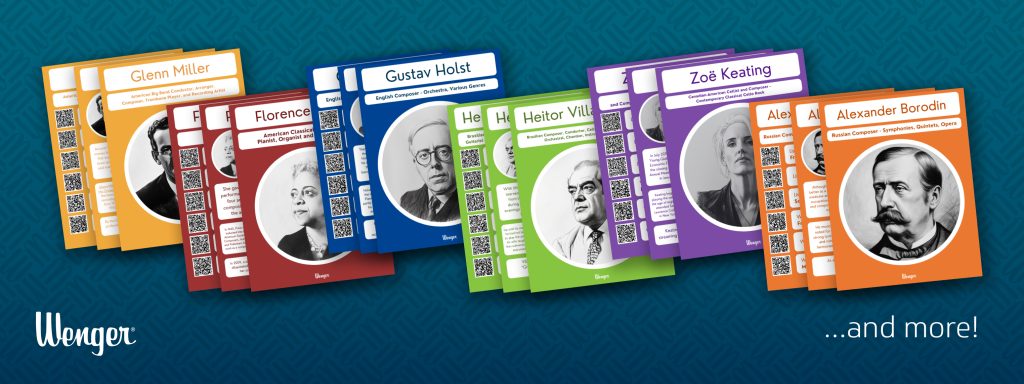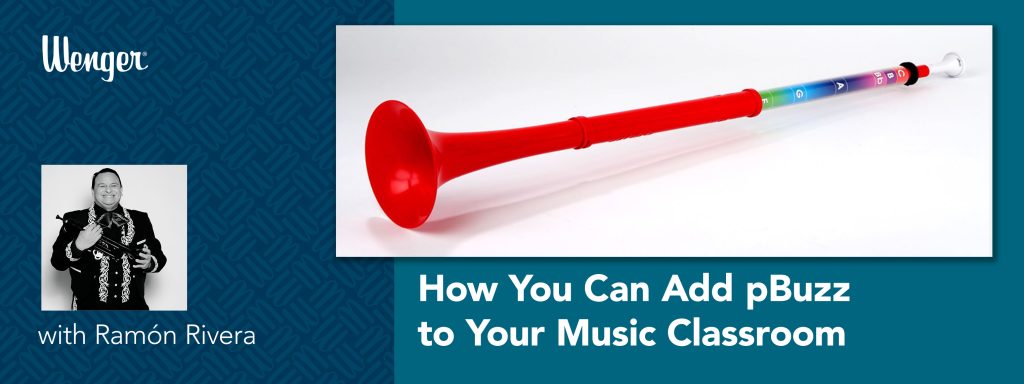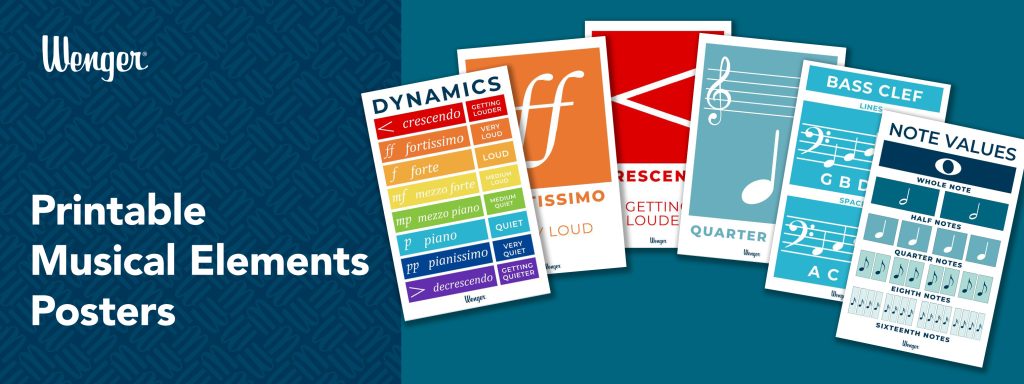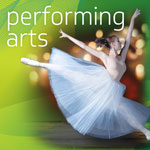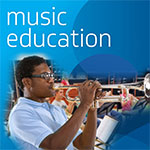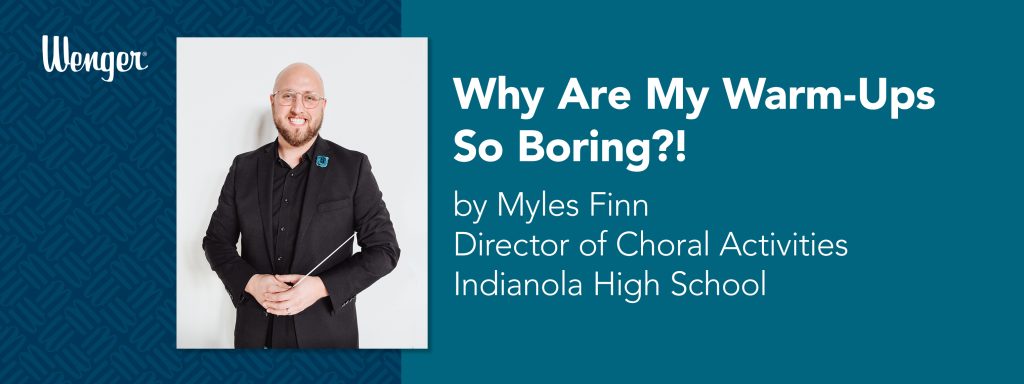
Your warm-ups aren’t boring, I promise. Warm-ups, historically, have been limited to the resources the directors have at hand, and sometimes, we don’t have the time to find anything new or develop our own that fit the needs of our students. So what do we do?
What is the purpose of a warm-up?
I like to break up the warm-up process into three different parts: Warming up the body, mind, and voice of the singer. Oftentimes, we think about warm-ups specifically in reference to making sure that the voice is “warm” or ready to sing through a rehearsal, but we can use this time to work on multiple parts of the singer to make sure they are best prepared for rehearsal.
Part 1 - Warm Up the Body!
Each day, students (that feel comfortable) give each other shoulder rubs whilst singing simple five-tone warm-ups (ie. Lip Buzz Do-Re-Mi-Fa-Sol-Fa-Mi-Re-Do).
Note: We have a conversation about comfort levels prior to having students give each other a shoulder rub. It’s important for students to feel comfortable voicing their concerns, and I make sure to give students the space to do so.
Once we’re done with shoulder rubs, I try to incorporate a kinesthetic movement to the warm-up, to continue to “warm-up” the body, but also to reiterate that our instrument is our body. On my TikTok, you can find several examples of the utilization of kinesthetic movement, no matter how elementary. One well-received example by my audience was the “Dum Dum Dada” warm-up which has students keep a steady patting beat while singing a simple melody. It’s goofy, but it works!
Part 2 - Warm Up the Mind!
There are a multitude of ways to warm up the mind; from whatever sight reading resource (we’re currently utilizing Masterworks Press’: “Steps to Harmony”) you’re currently using (yes it is part of the warm-up!) to tongue-twisters, harmonic improvisation, or pattern changing warm-ups. When using tongue-twisters, I’ll pick short, two or three word tongue twisters (ie. Irish Wristwatch, Unique New York, etc.) and sing them up and down a scale to make the students think about pronunciations of words.
Part 3 - Warm Up the Voice!
While all of the aforementioned warm-ups are also working to warm up the voice, sometimes it makes more sense for you to specifically work on extending range, checking that all voices are able to sing in the ranges they will be required to sing in throughout your repertoire. HOWEVER, these warm ups don’t necessarily have to only about ex
Warm Up Routine
Before rehearsals
Warm-ups are what start my interactions with my students each day. We don’t begin with literature, we don’t begin with announcements, we begin by singing. It sets the tone for rehearsals that we are going to be getting good singing done, and it establishes the musical priorities that we have for the day.
Before curricular choir performances
When getting ready for curricular choir performances, we are, typically, crunched for time. We are fortunate at Indianola to have five vocal ensembles performing on each curricular concert. This means that we only have about five minutes to ready each ensemble before they head to the stage.
Before show choir performances
The added logistics of moving instruments, risers, and around 90 students from warm-up to performances means that we have to streamline our warm-up process, make it reproducible from one competition to the next, and still make sure our warm-up is effective for the singers to do their best singing. Our warm-up consists of stretching, five-tone lip buzzes, “Sigh the Tone” from Kenneth Jennings “Sing Legato”, and “Hey Jude”! “Hey Jude” has become a staple for us to get us excited prior to our performance and has done wonders for their attitudes prior to a show choir performance! After this we move our risers (about 16 Wenger StageTek Platforms! Thank goodness they’re easy to carry!), props, band, and get rockin’ on stage!
Social Media as an ally - not an enemy
Yes, I have read “The Anxious Generation”, and yes I am aware of the dangers of Social Media, Cell Phone Usage, etc on the mental health of young people. My wife (a middle school counselor) and I recently spoke at the Iowa BEST Summit sponsored by the Scanlan Center for School Mental Health about the impact social media plays in schools. All of the current concerns of social media are valid and contain necessary conversations for us to have with our administrators, teachers, parents, and students.
I do, however, find that social media, like TikTok, can contain some wonderfully thoughtful ideas about music within the classroom. Shameless plug: I’ve been fortunate to gain notoriety on TikTok and Instagram for my work with musicals, but more recently I’ve had a consistent following on the warm-ups that I use in my classroom.
Over the past few years, I’ve taken different pop tunes and crafted a short 30 second to 1 minute warm-ups out of them. Any of the warm-ups I’ve recorded can be found on my TikTok and Instagram with the Solfege I used to teach it written into the video, but I’ve also began notating them for people who want quicker access to them. They can be found at itsmrfinn.com.
A few other TikTok influencers I’ve found that show beautiful glimpses into their classroom are @makbarton, @kolfege, @devindavisvocals, and @thatweirdchoirteacher. All of them are doing AWESOME stuff in their classrooms, and I can’t recommend “going down the rabbit hole” of their work, enough!
How to create your own warm ups
The process that I go through when creating a warm-up for my students, using different pop tunes, musical numbers, etc., consists of finding the “catchy bit” of the tune first! Probably one of my more popular warm-ups has been “Viva La Vida”. I played through the chord progression of the bridge, wrote out how I planned to teach it, then ran through it with my singers. It took about 5 minutes to learn, and now, we’ve got a fun new warm-up that we can add into the warm-up routine whenever we want!
A few recommendations if you plan to try tackling this for yourself…
- Find a pop tune, a musical theatre tune, or really any bit of music that is relevant to you and your students.
- This fall, my three-year-old has been obsessed with Chappell Roan’s HOTTOGO, so OBVIOUSLY, I had to write a quick warm-up using the chorus from that tune.
- Pick a moment within the piece that you can do the following:
- Easily build a harmonic moment (doesn’t have to be 8-part divisi!)
- Has a melody that your students can latch onto easily (or already know!)
- Write out exactly how you plan to teach it.
- When I began, I wrote out every note my students were going to sing on staff paper.
- Now, I write out a roman numeral chord progression underneath the text and teach via rote solfege.
Resources Recommendations
These are a few of my top recommendations for you!
- “Sing Legato” – Kenneth Jennings
- “Building Beautiful Voices” – Paul Nesheim with Weston Noble
Conclusion
Warm-ups don’t have to be a boring part of your rehearsal process. With some creativity and thought, they can become an engaging, impactful, and even fun part of your daily routine. I hope these tips help you bring new life to your warm-ups in the future!

Myles Finn
Director of Choral Activities Indianola High School @ItsMrFinn - TikTok @ItsMrMylesFinn - Instagram ItsMrFinn.com

